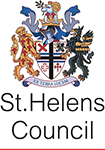
The slitting mill was established in 1773 with two wheel pits situated on either side (north and south) of the slitting and rolling area which would have measured approximately 14 x 4 m. The southern wheel pit contained a single water wheel and the northern wheel pit contained two water wheels.
No direct evidence was found for the location of a furnace or hearth, though there are some clues (in the form of apparently heated bricks) that it was located at the eastern end of the building, close to the dam wall.
The northern wheel pit has been investigated in most detail. It is roughly ‘bottle’ shaped in plan with a width of 2 m at the western end and 2.30 m at the eastern end (closest to the dam wall). The southern wall of the wheel pit is straight for its full length, the narrowing being caused by a pronounced kink in the northern wall that is thought to relate to the partial rebuilding of these walls.
At the time of the slitting mill both walls are thought to have been constructed of substantial red sandstone blocks. Other materials were also seen during the excavation and would appear to be linked to alterations to the wheel pit made at the time of the mill’s conversion from iron slitting to corn milling. The sandstone blocks have been scarred by the action of the water wheel which also suggests that the channel taking water away from the wheel (the tail race) was probably opened (and not covered over as it is now) at the time of the slitting mill.
Other markings were also found on the walls of the wheel pit e.g., the date ‘1773’. This is an important piece of evidence. It is not thought to have been a formal ‘date stone’ (as you might find on a building over a door or somewhere else prominent), but would have been hidden by the water wheel. The carving is a little clumsy and it is thought that it might have been a piece of graffiti produced by one of the stone mason’s who built the wheel pit. Other carvings or stone marks (symbols) were also found. At least one is the same as a mark recorded at another local mill site (Sefton Mill) build around the same time, which suggests that at least some of the masons may have worked on both sites.
The scars on the northern wheel pit walls from the western water wheel (furthest away from the dam wall) allow its diameter to be estimated at c. 4.4 to 4.8 m with an axle height about 0.90 m above ground level. It is estimated that this size of wheel would probably have generated 4 to 10 horse power, which is comparable to other water powered industrial sites of this period. Scarring at the eastern end of the northern wheel pit was also seen, but is thought to have been made after the conversion to a corn mill.
There is little or no further evidence of the construction and operation of the water wheels as the floor of the slitting mill would have been removed when it was converted to a corn mill. Other evidence suggests that the water wheel and axels are likely to have been made mainly of wood, but at this time cast iron axels had started to be used. The water wheels were fed with water from above and were therefore overshot or pitchback
It is thought that the southern wheel pit contained only one water wheel, rather than the two that ran in the northern wheel pit, and that this was only used when the site was a slitting mill. Both walls of this wheel pit were constructed in red sandstone blocks, but the upper two or three courses were built of hand-made red bricks. It is likely that the brick courses represent rebuilding during conversion to a corn mill when this wheel pit was filled in.
Scars from the action of the water wheel were also found on the walls in this wheel pit allowing the size of the wheel to be estimated as 4-5m in diameter sitting with its axel about 0.5 to 1m above the present ground level. Mason’s marks were also found that seemed to match those found in the northern wheel pit. Unfortunately, flooding due to heavy rain during the archaeological survey limited the extent of the investigation that could be safely undertaken in the southern wheel pit.
We know very little about the interior of the slitting mill, although there are some historical illustrations that provide an idea of the machinery involved in slitting iron bars to make rods. This process used large rollers and cutters and a furnace to heat iron bars. The water wheels were used to power rollers that flattened the bars and then cut (or slit) them into narrower strips. At other slitting mill sites there are records to show that these were used in nail and wire making or perhaps to form iron hoops for barrels. One of the water wheel may also have been used to power bellows for the furnace. We do not know exactly where the furnace was located in the Stanley bank slitting mill, but there are clues to suggest that it sat at the end of the building closest to the dam wall.
As an industrial building the slitting mill is likely to have been constructed of local materials. The remains of the walls are made of red sandstone blocks. Other slitting mills are single storey and the roof is likely to have used local sandstone flags. There are a few historical documents that describe the site when it was in use. They mention warehouses and housing so it is likely that there would have been other buildings around the mill for storage, stabling pack animals, and other uses.
